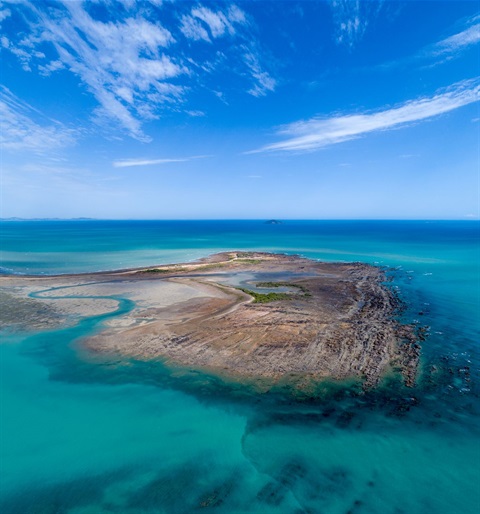Cape Palmerston National Park

Windswept rocky headlands, mangroves, swamps, rainforest and sand dunes are part of Cape Palmerston National Park's rugged beauty. Open eucalypt woodland with ironbark and poplar gums grows on the ridges while paperbark trees grow in the gullies.
The distinctive 344m Mt Funnel towers over the park.
The 7, 200-hectare park protects a range of plant communities and threatened animals.
The false water-rat lives in the park's mangroves while beach stone curlews are frequent the beaches.
Both are considered vulnerable to extinction. Pied imperial-pigeons which visit late winter and spring are close to the southern limit of their range.
The adjacent waters and the Cape Creek system are part of the Great Barrier Reef Marine Park.
Park access
Access to the park is by 4WD only.
Turn off the Bruce Highway at Ilbilbie and drive east towards Greenhill. The park is a further 6.5km.
Allow 45 minutes to reach the Cape Creek camping area from the park boundary.
Take care driving in soft sand along the beach and beware of the extreme tidal range.
Camping
Camping is allowed at Windmill Bay, Cape Creek and Clark Bay.
Permits are required and must be obtained from the self-registration station before setting up camp.
All campers/visitors must be self-sufficient and carry food, water, extra fuel and fuel stove.
Please remember to remove all rubbish from the park, Cape Palmerston National Park.
Things to do
- Scramble up Cape Palmerston for breathtaking views towards the Northumberland Islands and Mount Funnel.
- Try your luck fishing or crabbing – be aware of stingers (October to May) and estuarine crocodiles.
- Go bird watching. See ospreys and sea eagles soaring overhead or white-breasted wood swallows in the flowering grass trees.
- Go animal watching and try and spot the false water rat and stone curlews.
- Other things to do include: boating, canoeing and other water activities, picnicking, scenic drives and nature studies.